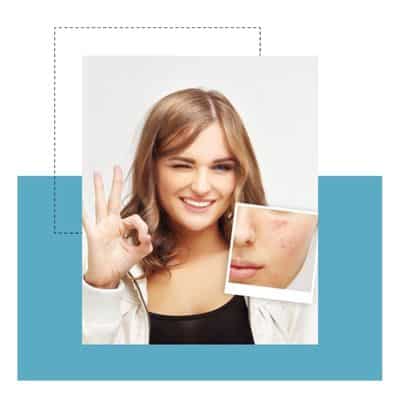Scars happen to everyone. Regardless of the cause, they can be subtle or noticeable. What’s important for the person who has a scar is that they feel comfortable with it. While we can’t permanently remove them, there are several options for treating and minimizing the appearance of scars.
What Is A Scar?
Scars, also called cicatrix, form naturally as your body heals and releases collagen fibers that close a wound. Unless they’re minor wounds, all wounds leave some scarring. Scarred skin has a different texture and appearance than the surrounding skin. Most are flat, but some are raised or look pitted. There are four different types:
- Atrophic—have indentations and are often darker than the surrounding skin. It occurs with issues such as chickenpox or acne.
- Keloid—sometimes your body produces too much collagen, which produces scarring that looks ‘thick’ or ‘puffy.’
- Hypertrophic – similar to keloid scars, but the scarring does not spread beyond the damaged area. These are also often darker than the surrounding skin.
- Contracture—when large parts of your skin are quickly damaged, as happens from burns or ‘stretch marks’ from pregnancy, your body forms shiny scars that are tight and can restrict movement.

The way your scar looks depends on several factors such as:
- Your age when you got it
- The age you are now
- Your overall health
- Its position and size
- Its cause (cut, burn, disease, etc.)
- Your family history of scarring
People who look for scar minimizing or removal techniques often feel that their scar doesn’t look right as it might be lumpy or oddly colored. Or they might struggle with persistent itching or even pain. For those interested in these techniques, there are several treatment options available.
How To Minimize The Appearance Of Scars
There are several methods you can use to treat scars at home, but these might not work for everybody. These include:
- Aloe vera—applied to the scar for thirty minutes twice a day.
- Vitamin E—massage into skin for 10 minutes, three times a day.
- Coconut oil—massage into skin for 10 minutes, then leave it on for an hour twice a day.
- Honey—apply to your scar every night before bed. Wrap it with a bandage or something to stop the honey from rubbing off. Leave overnight and wash off in the morning.
For those looking for medical treatment, the first step is to see your dermatologist. They will have several options available and will recommend the best course of treatment.
How A Dermatologist Or Cosmetic Surgeon Can Help You
Scars are more complicated than we think, and different scars need different treatments. Here are some options that your dermatologist or cosmetic surgeon might recommend:
- Chemical peels—your doctor will apply safe chemicals to your scar to remove the top layer of skin. As the skin regrows, the scar is often improved in color and appearance.
- Cortisone injections—help shrink and soften thick or hard scars.
- Dermabrasion—removes scar tissue using an ‘abrasive’ technique that leaves the skin with a smooth and ‘fresh’ appearance. This is an effective treatment for small and surgical acne scars.
- Laser resurfacing – works on the same principle as chemical peels and dermabrasion. It uses a laser to remove the scar, and new, healthier skin grows back.
- Surgical revision—Your doctor removes the entire scar and closes the area so that only a much smaller, often straight line is left.
When To See A Dermatologist Or Cosmetic Surgeon
If you experience a lot of pain, itching, or discomfort from your scar, you should contact a medical professional and ask for advice and information. This is also true for those with emotional or psychological issues related to scarring. An excellent place to start is the Plastic Surgery Center of Hampton Roads. You can request an appointment online.


